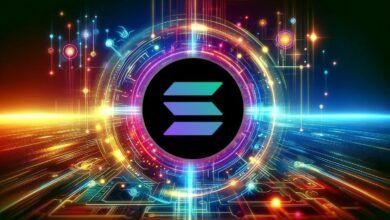
Business models in the context of decentralized payment systems like XRP and other blockchain-based
technologies are reshaping how businesses operate, interact with customers, and deliver services. The transformation in payments enables new ways of structuring business models across industries, particularly in finance, commerce, and technology. Here’s a look at some of the most innovative business models emerging due to decentralized payment systems:
1. Decentralized Finance (DeFi)
- What it is: DeFi refers to a set of financial services (like lending, borrowing, trading, and investing) built on blockchain technology, without relying on traditional intermediaries such as banks or brokers.
- Business Model: DeFi platforms enable users to engage in financial activities directly through smart contracts, making processes more transparent, inclusive, and accessible. By using cryptocurrencies like XRP or other tokens, DeFi allows users to:
- Lend or borrow funds without needing a bank.
- Trade and earn interest through decentralized exchanges (DEXs).
- Access yield farming or liquidity pools to earn rewards.
- Revenue: DeFi platforms typically earn revenue through transaction fees, interest on lending/borrowing, or a portion of the yield farming rewards. These platforms can also provide staking and governance token opportunities for investors.
2. Payment Processors
- What it is: Payment processors are platforms that enable businesses to accept payments from customers, typically via credit cards, bank transfers, or digital wallets.
- Business Model: With decentralized payment systems like XRP, payment processors are evolving into blockchain-powered gateways. They offer businesses the ability to:
- Accept payments in digital currencies (like XRP, Bitcoin, or Ethereum).
- Reduce fees associated with traditional payment processing.
- Integrate with global payment networks to provide faster, cross-border transactions at a low cost.
- Revenue: These platforms typically earn revenue by charging transaction fees, but the fees are much lower compared to traditional payment processors due to the lack of intermediaries. Some payment processors also offer additional services such as fraud protection or analytics for a fee.
3. Micropayment Systems
- What it is: Micropayments are small transactions, often for digital content or services, such as paying a few cents for a song or a small fee to read an article online.
- Business Model: With traditional payment systems, the transaction fees often make micropayments unfeasible due to the high overhead. However, decentralized payment systems like XRP enable low-fee transactions, making microtransactions viable.
- Content creators, apps, or services can charge users tiny amounts for each use or purchase, such as pay-per-use models for streaming or reading.
- XRP and other cryptocurrencies allow for instant, small-value payments across borders, enabling businesses to monetize digital content in new ways.
- Revenue: Businesses generate income by offering pay-per-use or subscription models, where customers make microtransactions for each piece of content, or service accessed. The low transaction fees on XRP ensure businesses can profit even from small payments.
4. Tokenized Assets and Security Tokens
- What it is: Tokenization refers to converting real-world assets (like real estate, artwork, or stocks) into digital tokens on the blockchain.
- Business Model: With decentralized payment systems and smart contracts, businesses can now offer fractional ownership or enable assets to be digitally transferred in a secure and transparent way. For example:
- Real estate can be tokenized, allowing people to invest in fractional ownership of properties.
- Artworks can be sold in small fractions, enabling people to invest in expensive pieces without needing to buy the entire asset.
- Security tokens can represent shares in a company, allowing for easier and more liquid trading of equity.
- Revenue: Businesses can generate revenue by charging issuance fees, transaction fees, or taking a percentage of each sale or trade. Tokenization platforms may also charge for storage or custody services for tokenized assets.
5. Decentralized Marketplaces
- What it is: A decentralized marketplace is a platform where buyers and sellers can transact directly with each other, without a centralized intermediary.
- Business Model: By utilizing decentralized payment systems like XRP, these platforms allow users to trade digital goods, services, or physical assets directly. Some examples include:
- Peer-to-peer marketplaces for digital products such as NFTs (non-fungible tokens), software, and art.
- Freelance platforms where workers and employers can engage directly, using cryptocurrency for payment.
- Decentralized exchanges (DEXs) for cryptocurrency trading where users trade tokens or coins without centralized control.
- Revenue: Marketplaces typically charge a small fee per transaction, whether a listing fee or a percentage of the trade. They may also offer additional services, such as premium listings or advertising for a fee.
6. Staking and Yield Generation
- What it is: Staking refers to the process of participating in the network’s proof-of-stake system by holding and “staking” cryptocurrency tokens to earn rewards.
- Business Model: Users who own XRP or other cryptocurrencies can lock their tokens into a staking platform to earn passive income in the form of staking rewards. This mechanism also helps secure the blockchain network.
- Crypto exchanges or wallet providers may offer staking services, allowing users to earn rewards for locking up their tokens.
- Platforms can also generate income by charging a fee for facilitating staking or by offering staking pools where users can collectively stake their assets.
- Revenue: The platform earns a commission on the staking rewards or fees for providing the service. Additionally, some platforms charge withdrawal fees or provide premium staking services.
7. Cross-Border Payment Solutions
- What it is: Cross-border payments involve sending money or making transactions between different countries, often with high costs and delays due to intermediaries.
- Business Model: Decentralized systems like XRP enable businesses to offer fast, low-cost, and borderless payment solutions. Cross-border payment providers like RippleNet (powered by XRP) can facilitate instant settlements between businesses and customers globally, reducing transaction times and fees.
- Remittance companies can use XRP to send money to families or businesses in different countries at a fraction of the cost compared to traditional money transfer services.
- Revenue: Cross-border payment solutions can earn through transaction fees, either from sending or receiving payments. Some businesses may charge for currency conversion or premium services like priority processing.
8. Cryptocurrency Wallets and Custody Services
- What it is: Cryptocurrency wallets are digital tools that allow users to store, send, and receive digital assets like XRP, Bitcoin, or Ethereum.
- Business Model: Crypto wallet providers offer services that allow users to manage and secure their digital assets. Many wallets also provide access to decentralized apps (dApps), staking, or decentralized exchanges (DEXs).
- Some wallet providers act as custodians for institutional investors, providing secure storage and compliance services.
- Revenue: Wallet providers can generate revenue by charging transaction fees, offering premium features, providing custody services, or earning interest on the assets held in wallets.
: How Business Models are Shifting
The advent of decentralized payment systems and blockchain technology is revolutionizing the way businesses operate. New models like DeFi, micropayments, tokenization, and cross-border payment solutions are reducing costs, increasing access, and promoting innovation. As businesses tap into these emerging models, we can expect even more disruption in industries ranging from finance to e-commerce, media, and technology.



